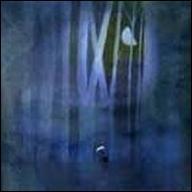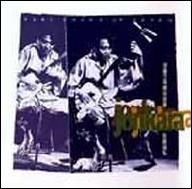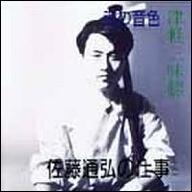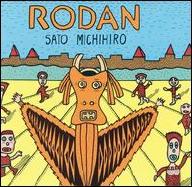Satoh Michihiro
January 1, 1957 (age 67)
Biography
Tsugaru-shamisen player Satoh Michihiro was born in Tokyo. Around the age of 13, Michihiro's mother, who also played, enrolled him in a school to learn to play the shamisen. Unusually young for a shamisen student (the majority of students are at least twice that age) and a fast learner, Michihiro's progress caused tensions at the school that resulted in his expulsion one month after enrolling. He was not interested in becoming a professional musician and so enrolled at Tokai University in 1975 intending to become a ship captain. During his junior year, he attended a performance by tsugaru-shamisen player Chisato Yamada and was completely changed by the art of Yamada's music. Michihiro decided to move to Northern Japan and study with Yamada, and by 1981 was a teacher himself. The following two years, he won the National Tsugaru-Shamisen Contest. The shamisen community was governed by a licensing system for teachers of traditional Japanese arts, called iemoto, and within this system each performer is affiliated with a school to which he is closely connected not just artistically, but socially and financially. Believing this structure to be limiting to shamisen music's development, Michihiro began playing outside of the shamisen community in 1983, performing in jazz, rock and free improvisation settings. That year, he left Japan for the first time to perform in Edmonton, Canada. The next eight years found him returning overseas annually, most often for solo performances in New York. In 1984, John Zorn asked Michihiro to record with him, and the following year, Ganryu Island was released, with Michihiro returning touring North America shortly after (it was reissued by Tzadik in 1998). Back in Tokyo that same year, he began an ongoing occasional concert series called "Tsugaru-Shamisen NOW," which featured himself collaborating with guest musicians, such as Zorn and Kazutoki Umezu. In 1986, Michihiro was awarded a Rockefeller fellowship to study music for one year. 1988 found him in recording sessions with improvisers and top musicians such as Fred Frith, Ned Rothenberg, Ikue Mori, Christian Marclay, and Gerry Hemingway. These sessions became the 1989 release Rodan. The same year, he directed music for the movie #Tsugaru, then held six bi-monthly concerts of free improvisation also entitled Rodan. He formed the Satoh Michihiro Super Band in 1992, that changed its name to the Satoh Michihiro Tsugaru Shamisen Gakudan (Band) in 1994. They released Natsu Yoi Matsuri in 1995. Also during this time, he released two CDs of traditional Japanese music. ~ Joslyn Layne, Rovi
Top Tracks
|
1
|
|
[Untitled] |
|
2
|
|
[Untitled] |
|
3
|
|
Nikata Bushi |
Albums
Videos
Close





















